The Boer War medal awarded to Lieutenant C. S. Carmichael, Steinaecker’s Horse, one of the six scouts originally selected by Steinaecker to join him in his famous raid in an attempt to blow up the bridge at Komati Poort, a round trip of 1000 miles Queen’s South Africa 1899-1902, 3 clasps, Relief of Ladysmith, Transvaal, South Africa 1901 (Lt. C. S. Carmichael, Steinaecker’s H.) good very fine £500-600 Footnote Charles Sherwood Carmichael was born in 1877, presumably in England, and later farmed on the Lebombo Range in Swaziland. During the Boer War he served as a Trooper in No. 2 Troop, E. Squadron, Colonial Scouts, from 6 December 1899, until discharged on 19 March 1900. He then served as a Guide in the Field Intelligence Department. In March 1899, Steinaecker, a lieutenant in the Intelligence Department, selected six scouts for special service. They were Sgt-Major A. R. Colborne with Scouts Charles S. Carmichael, Bernard Duncan, Alfred E. Gray, John A. Lawson, and George Meissner. With this small party and eight Zulu Nonquai, black members of the Zululand Police, Steinaecker left Eshowe on 3rd April 1900, and rode or walked through Zululand and Swaziland, a distance of 500 miles. Their horses having died of horse-sickness, the party were on foot when the Transvaal border was reached. On their journey they had picked up a British settler, Holgate, afterwards a Captain in Steinaecker’s Horse. He knew the country thoroughly, and as a guide in the last stages was invaluable. The party intended to attempt the blowing up of the great bridge at Komati Poort, but found it too strongly guarded. Steinaecker and three men now struck through the bush, swam the Komati river “when the crocodiles were off their feed,” travelled all the night of 16th June, and on the 17th, after dark, placed nearly 100 lb. of dynamite between the masonry and girders of a bridge at Malelane, forty miles up the line, and destroyed it. The fact that the Boers afterwards restored the bridge does not detract from the credit due to Steinaecker and his gallant men for their splendid piece of daring, which, strangely enough, was never recognised in despatches. Having returned to Natal, Steinaecker now recruited for his “Horse” which served with great distinction throughout the remainder of the South African war. Of the original group, Lawson and Carmichael were locally promoted to Sergeant. Carmichael was appointed Lieutenant in Steinaecker’s Horse on 16 September 1900, and served in Swaziland and in the eastern Transvaal. On 8 December 1900, Lieutenant Carmichael led a patrol into Bremersdorp, the old Boer capital in Central Swaziland, and took eight prisoners, including two brothers named Stewart. One of them, Vallance M. Stewart, had been given special permission to continue trading in Swaziland when the Boer administration had ordered the whites out of the country and he was also suspected of supplying information on British movements to the Boers. Carmichael ordered Stewart’s wagon to be burned and commandeered his two horses. He was later detained as a prisoner of war in Pretoria. It is not surprising that from late 1900, Steinaekcer’s Horse enjoyed the nickname ‘Steinaecker’s Forty Thieves’ in Komati Poort. Some considered that Steinaecker himself was just a ‘damned German playing the fool as a British Officer’. Whilst serving with Steinaecker’s Horse the following year, Carmichael was hospitalised but returned to duty on 12 May 1901. He resigned on 29 June 1901 and was issued with the medal and 3 clasps. In WWI he enlisted on 6 October 1914, as Trooper No 42 in the Imperial Light Horse and served throughout the campaign in German South West Africa (Namibia). On 10 August 1915, he was discharged and on 14 October 1915 he joined the Royal Field Artillery as a Lieutenant. The address of his next of kin was given as Walmer, England. (Ref. Steinaecker’s Horsemen, South Africa 1899-1903, W. Woolmore)
The Boer War medal awarded to Lieutenant C. S. Carmichael, Steinaecker’s Horse, one of the six scouts originally selected by Steinaecker to join him in his famous raid in an attempt to blow up the bridge at Komati Poort, a round trip of 1000 miles Queen’s South Africa 1899-1902, 3 clasps, Relief of Ladysmith, Transvaal, South Africa 1901 (Lt. C. S. Carmichael, Steinaecker’s H.) good very fine £500-600 Footnote Charles Sherwood Carmichael was born in 1877, presumably in England, and later farmed on the Lebombo Range in Swaziland. During the Boer War he served as a Trooper in No. 2 Troop, E. Squadron, Colonial Scouts, from 6 December 1899, until discharged on 19 March 1900. He then served as a Guide in the Field Intelligence Department. In March 1899, Steinaecker, a lieutenant in the Intelligence Department, selected six scouts for special service. They were Sgt-Major A. R. Colborne with Scouts Charles S. Carmichael, Bernard Duncan, Alfred E. Gray, John A. Lawson, and George Meissner. With this small party and eight Zulu Nonquai, black members of the Zululand Police, Steinaecker left Eshowe on 3rd April 1900, and rode or walked through Zululand and Swaziland, a distance of 500 miles. Their horses having died of horse-sickness, the party were on foot when the Transvaal border was reached. On their journey they had picked up a British settler, Holgate, afterwards a Captain in Steinaecker’s Horse. He knew the country thoroughly, and as a guide in the last stages was invaluable. The party intended to attempt the blowing up of the great bridge at Komati Poort, but found it too strongly guarded. Steinaecker and three men now struck through the bush, swam the Komati river “when the crocodiles were off their feed,” travelled all the night of 16th June, and on the 17th, after dark, placed nearly 100 lb. of dynamite between the masonry and girders of a bridge at Malelane, forty miles up the line, and destroyed it. The fact that the Boers afterwards restored the bridge does not detract from the credit due to Steinaecker and his gallant men for their splendid piece of daring, which, strangely enough, was never recognised in despatches. Having returned to Natal, Steinaecker now recruited for his “Horse” which served with great distinction throughout the remainder of the South African war. Of the original group, Lawson and Carmichael were locally promoted to Sergeant. Carmichael was appointed Lieutenant in Steinaecker’s Horse on 16 September 1900, and served in Swaziland and in the eastern Transvaal. On 8 December 1900, Lieutenant Carmichael led a patrol into Bremersdorp, the old Boer capital in Central Swaziland, and took eight prisoners, including two brothers named Stewart. One of them, Vallance M. Stewart, had been given special permission to continue trading in Swaziland when the Boer administration had ordered the whites out of the country and he was also suspected of supplying information on British movements to the Boers. Carmichael ordered Stewart’s wagon to be burned and commandeered his two horses. He was later detained as a prisoner of war in Pretoria. It is not surprising that from late 1900, Steinaekcer’s Horse enjoyed the nickname ‘Steinaecker’s Forty Thieves’ in Komati Poort. Some considered that Steinaecker himself was just a ‘damned German playing the fool as a British Officer’. Whilst serving with Steinaecker’s Horse the following year, Carmichael was hospitalised but returned to duty on 12 May 1901. He resigned on 29 June 1901 and was issued with the medal and 3 clasps. In WWI he enlisted on 6 October 1914, as Trooper No 42 in the Imperial Light Horse and served throughout the campaign in German South West Africa (Namibia). On 10 August 1915, he was discharged and on 14 October 1915 he joined the Royal Field Artillery as a Lieutenant. The address of his next of kin was given as Walmer, England. (Ref. Steinaecker’s Horsemen, South Africa 1899-1903, W. Woolmore)

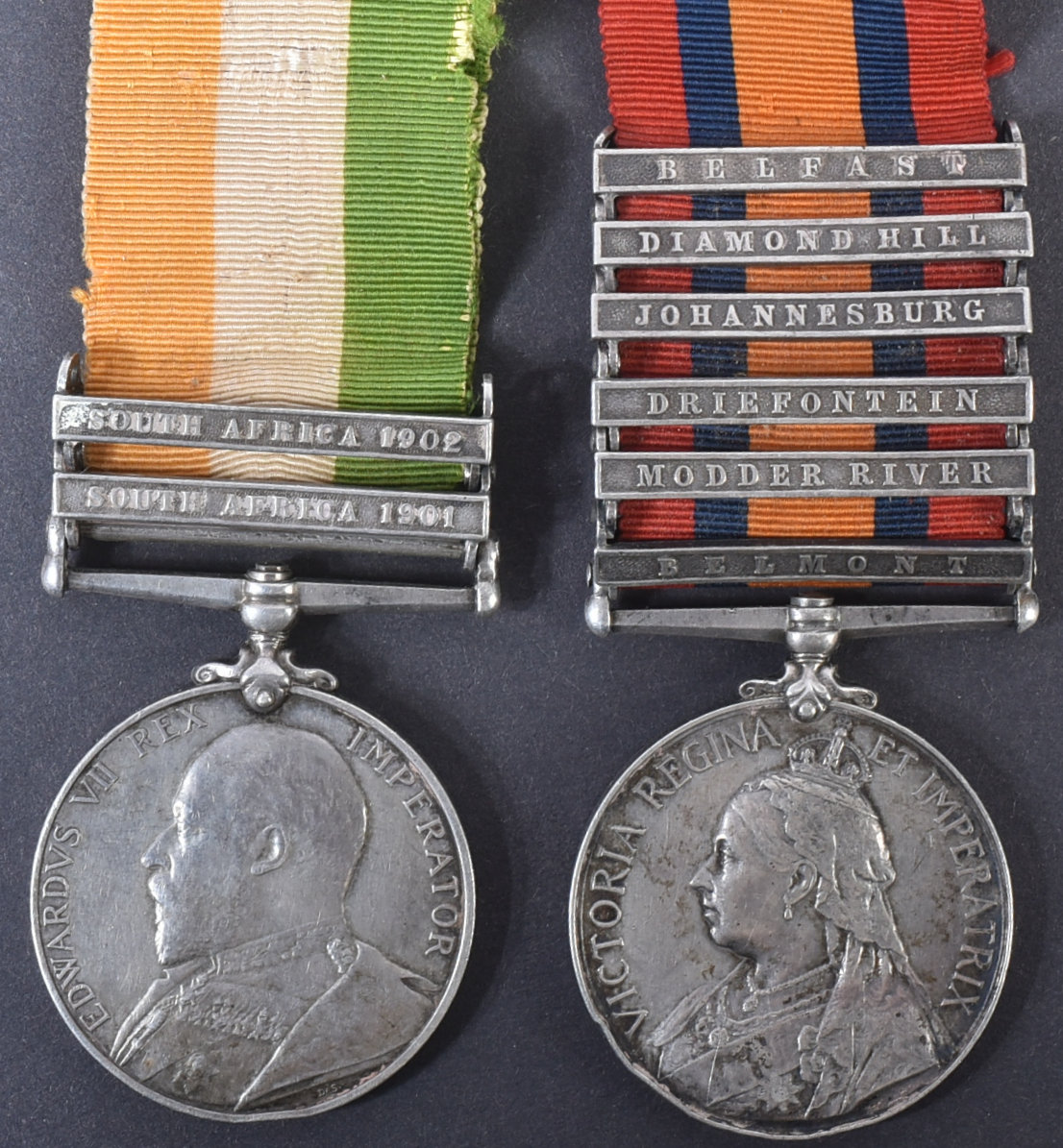
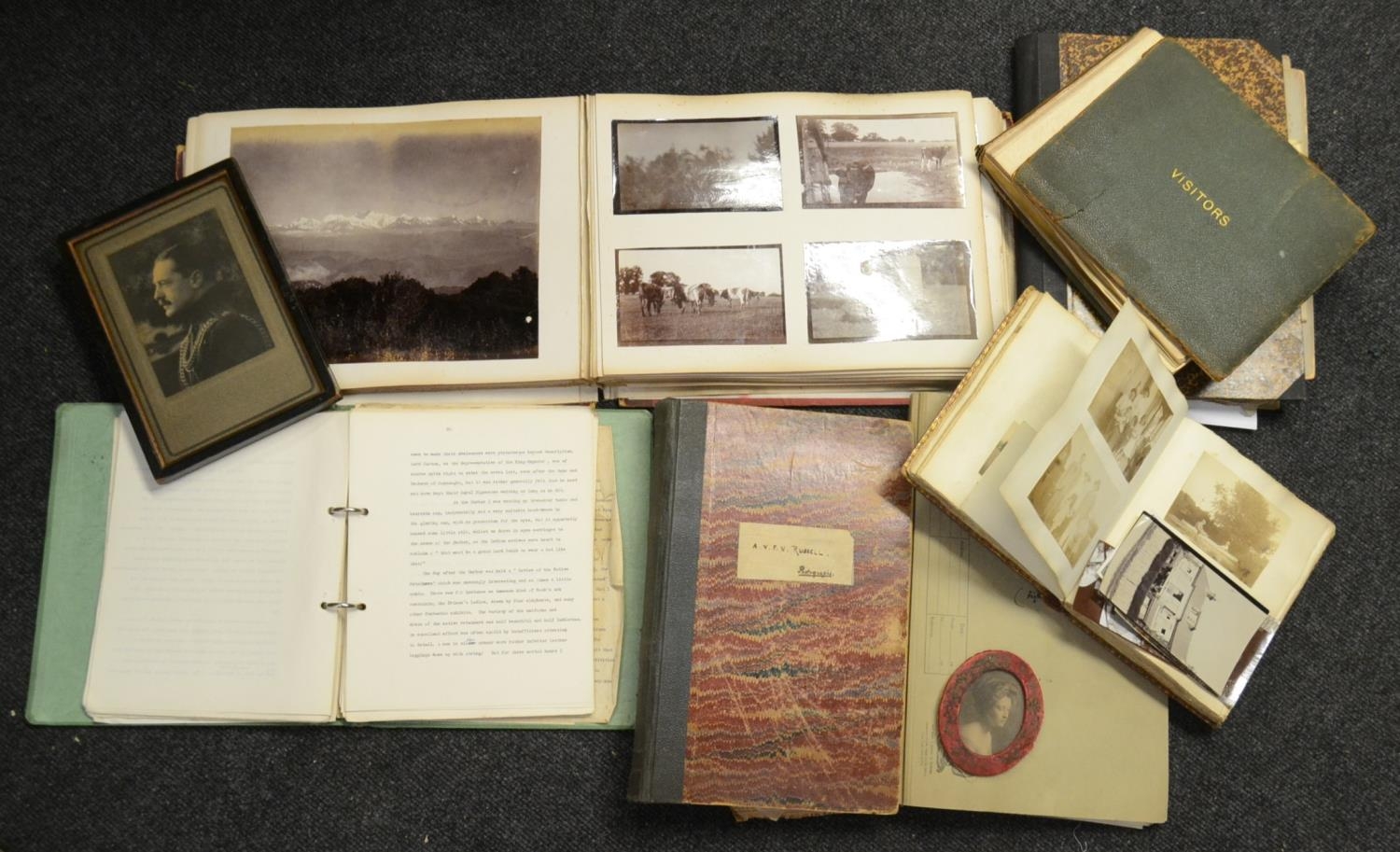



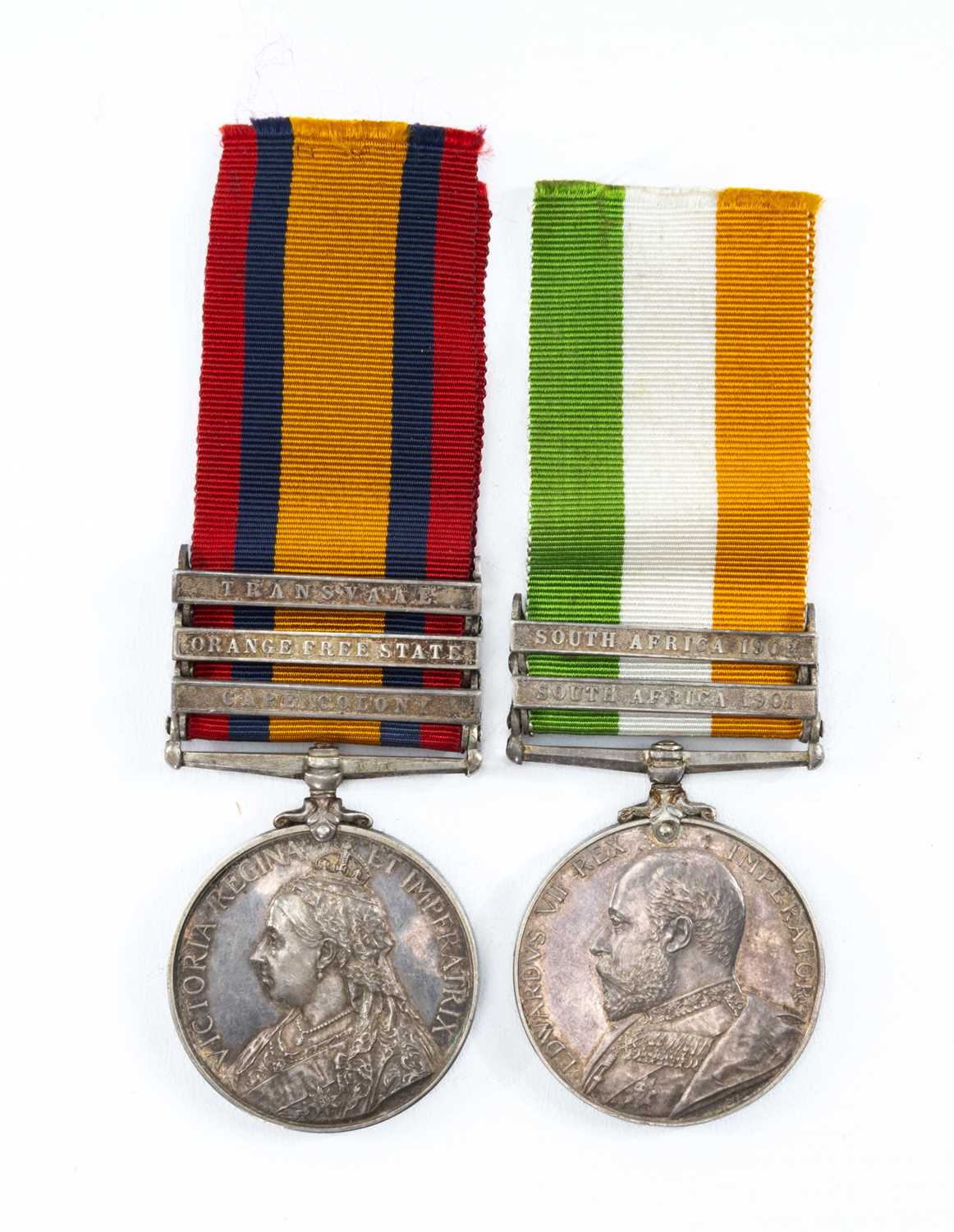
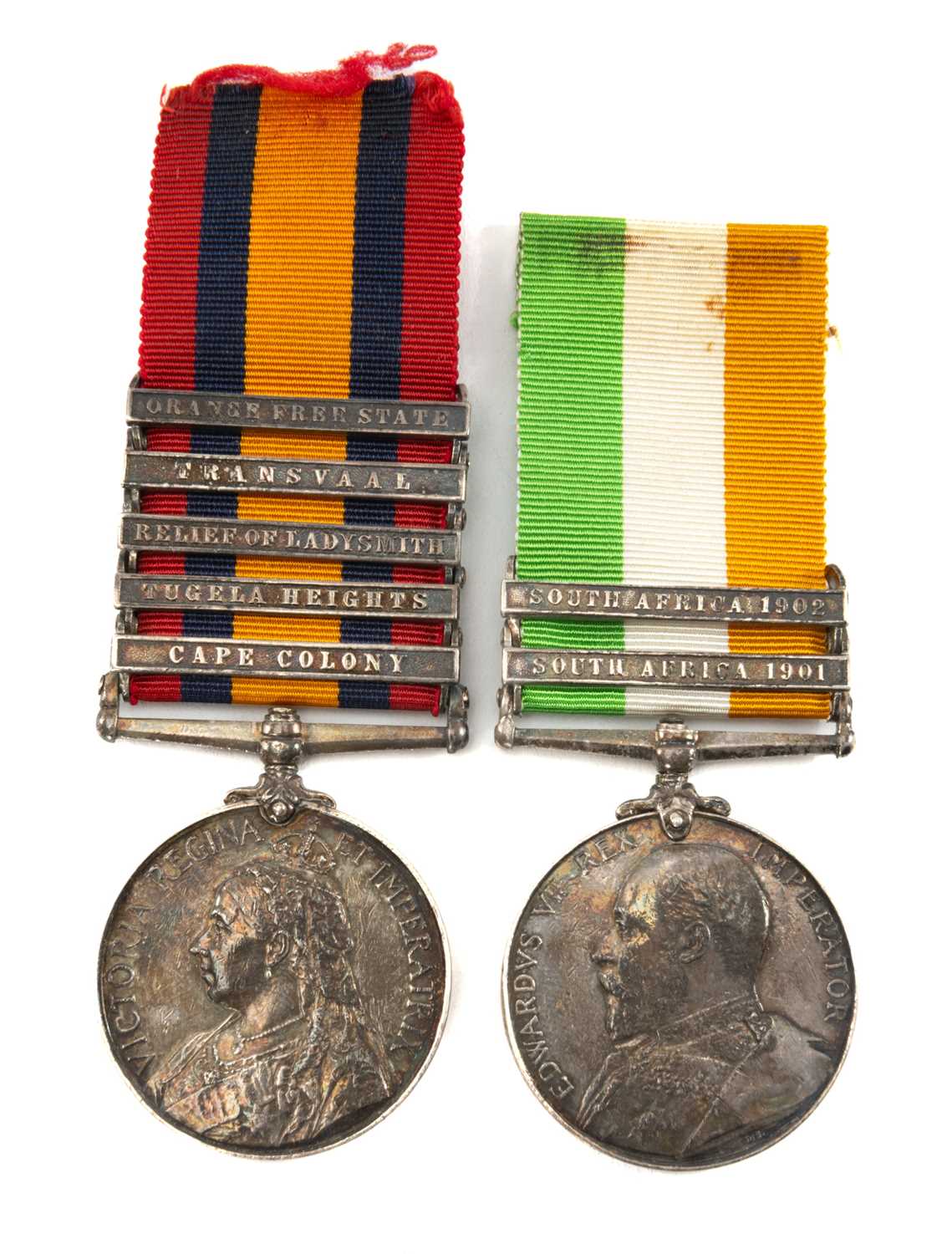





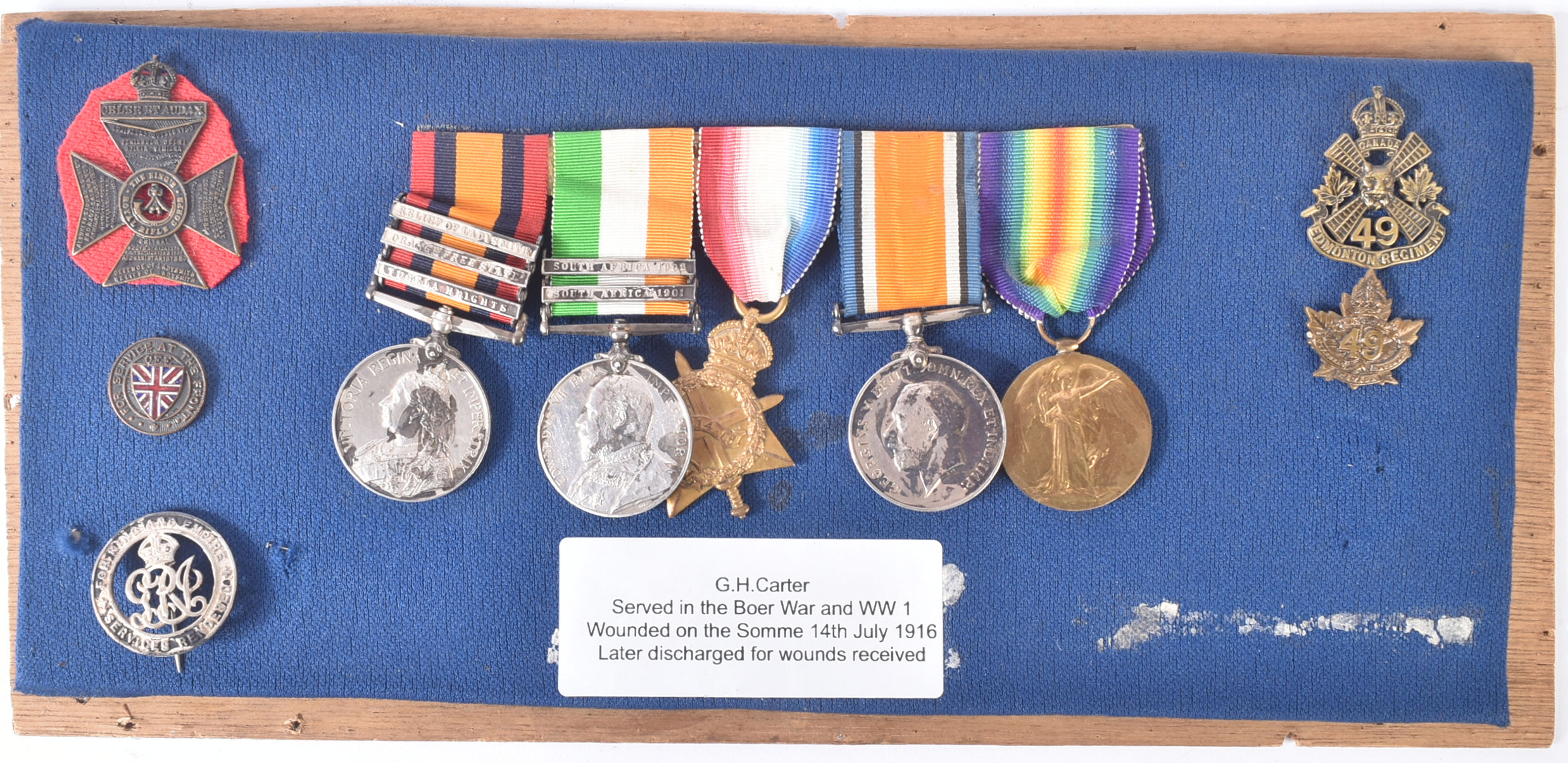

Testen Sie LotSearch und seine Premium-Features 7 Tage - ohne Kosten!
Lassen Sie sich automatisch über neue Objekte in kommenden Auktionen benachrichtigen.
Suchauftrag anlegen